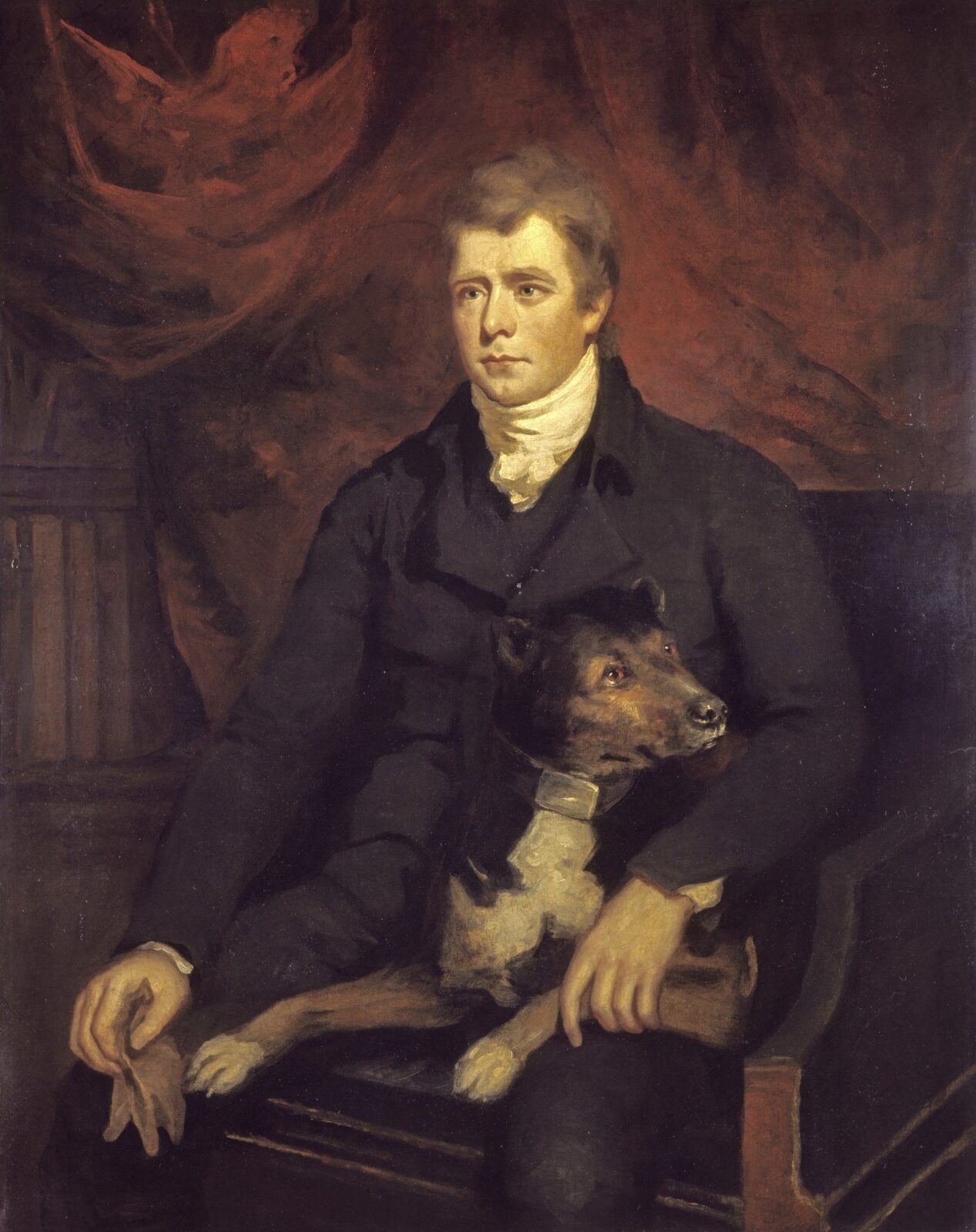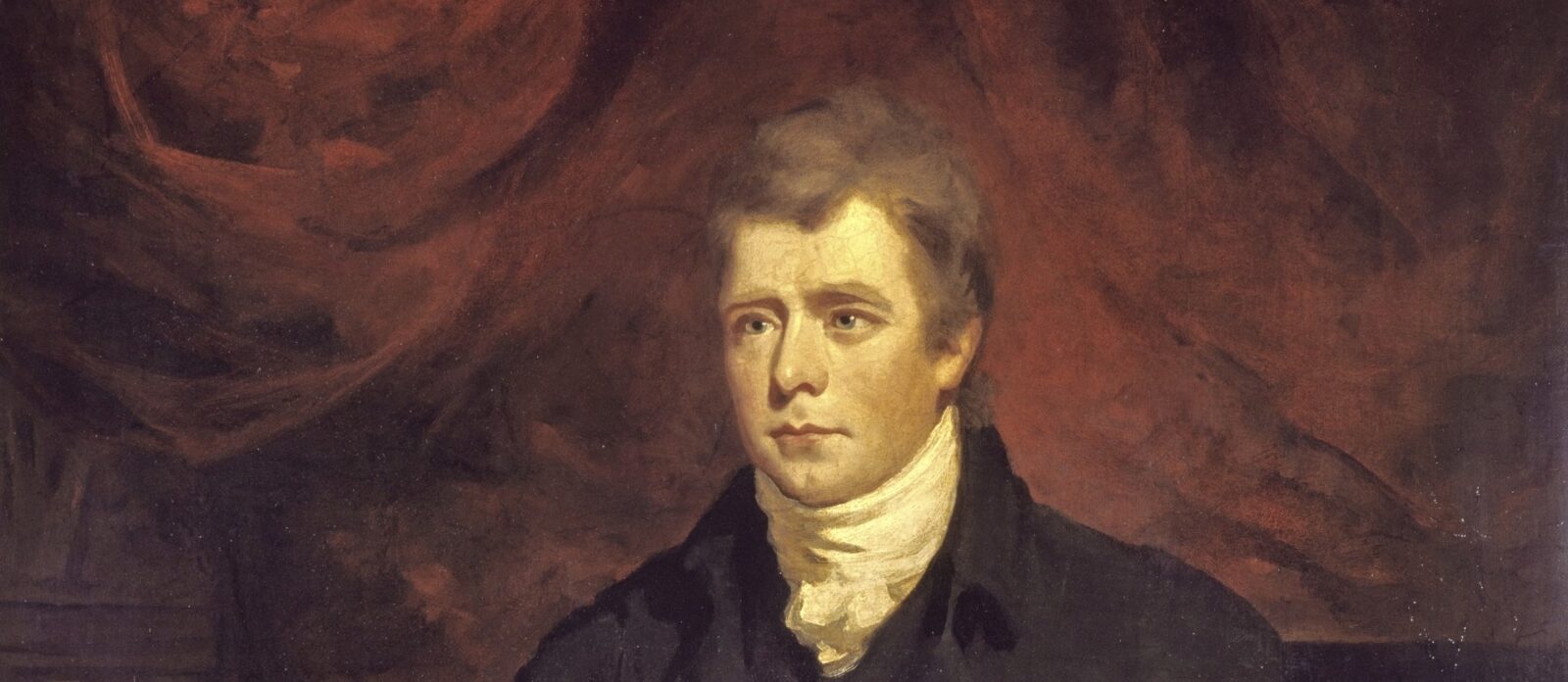‘The most wonderful I ever met with’: Scott’s Admiration for Austen
15 August 2021 marks the 250th anniversary of the birth of Sir Walter Scott - a Scottish novelist, poet and playwright who was wildly popular in the early nineteenth century. He was also a long-term admirer of Jane Austen, and she of him. In celebration of Walter Scott 250, Professor Alison Lumsden explores what these two extraordinary writers thought of each other.2021 marks the 250th anniversary of Walter Scott’s birth and it seems appropriate to consider the relationship between Scott and Austen here.
Scott was a long-time admirer of Austen and in his journal of 14 March 1826 writes:
‘Also read again and for the third time at least Miss Austen’s very finely written novel of Pride and Prejudice. That young lady had a talent for describing the involvements and feelings and characters of ordinary life which is to me the most wonderful I ever met with. The Big Bow wow strain I can do myself like any now going but the exquisite touch which renders ordinary common-place things and characters interesting from the truth of the description and the sentiment is denied to me. What a pity such a gifted creature died so early.’
A few weeks later Scott notes that a novel he is reading is ‘over labourd’ and that ‘the women do this better — Edgeworth, Ferrier, Austen have all had their portraits of real society far superior to anything Man vain Man has produced of the like nature’. In his biography of Scott J.G. Lockhart recalls that his father-in-law read Austen’s novels aloud to the family circle and on 18 September 1827, when Scott’s wife has died and his daughter Sophia has married, Scott recounts that after a day’s writing he relaxes on his own by whiling ‘away the evening over one of Miss Austen’s Novels’. ‘There is’ he adds ‘a truth of painting in her writings which always delights me’.

Sir Walter Scott, by James Saxon (1805). Reproduced courtesy of National Galleries of Scotland
Scott’s enthusiasm for Austen was first outlined in a review of Emma in the Quarterly Review of October 1815. Here Scott praises Austen in ways that reflect his later journal entries, observing that Austen writes in an innovative style that moves away from ‘wild variety of incident’, a quality that Scott equates elsewhere with romance narratives. Such ‘excitements’ he notes have ‘lost much of their poignancy by the repeated and injudicious use of them’. Austen, he suggests, substitutes these for ‘the art of copying from nature as she really exists in the common walks of life’ offering the reader ‘a correct and striking representation of that which is daily taking place around him’, qualities which Scott clearly admires.
But what did Austen think of Scott? While Scott’s novels were of course published anonymously their authorship was a fairly open secret and she seems to have guessed the identity of the Author of Waverley. In a letter to Anna Austen of 28 September 1814 (only a few months after the publication of Waverley) Jane writes:
‘Walter Scott has no business to write novels, especially good ones.—It is not fair.—He has Fame and Profit enough as a Poet, and should not be taking the bread out of other people’s mouths.—I do not like him, & do not mean to like Waverley if I can help it—but I fear I must’.’
Austen both acknowledges her admiration for his first novel and registers her irritation with Scott for moving into her creative territory.
This observation also reveals Austen’s familiarity with Scott’s poetry and indeed two of Austen’s more sober and sensible heroines, Mansfield Park’s Fanny Price and Persuasion’s Anne Elliot, reveal that they have read it. On the visit to Rushworth’s residence Fanny is disappointed with the chapel and quotes Scott’s poem ‘The Lay of the Last Minstrel’ from which her rather Romantic ideas of what a chapel should look like have been formed. (Scott describes Rosslyn Chapel in his poem.) On the night of the ball ‘The Lay’ is alluded to again when Fanny is compared to ‘the Lady of Branxholm Hall’ who stops ‘“one moment and no more” to view the happy scene’. Having read Scott’s poetry, it would seem, is a marker of Fanny’s sound self-education and her liking of it is evidence of her superior emotional intelligence.
In Persuasion the engagement with Scott’s poetry is more overt. While she walks with Captain Benwick in Lyme Regis Anne discovers that ‘He was evidently a young man of considerable taste in reading, though principally in poetry’. They then discuss whether Scott’s Marmion or The Lady of the Lake are to be preferred and compare the merits of Scott and Byron. Anne suggests that reading poetry is unlikely to be helpful to Benwick’s emotional well-being and recommends in its place the ‘works of [the] best moralists … collections of the finest letters … memoirs of characters of worth and suffering … calculated to rouse and fortify the mind by the highest precepts, and the strongest examples of moral and religious endurances’. But Austen is not being entirely serious here; Anne is at her most priggish and even she is well aware that the ‘best moralists’ are unlikely to offer much consolation for a broken heart. Indeed, she ‘could not but be amused at the idea of her coming to Lyme to preach patience and resignation to a young man whom she had never seen before’ and reflects that ‘she had been eloquent on a point in which her own conduct would ill bear examination’. Once again Scott’s poetry is being used as a foil, representing the merits of a more Romantic form of sensibility.
As Scott himself acknowledges he is a very different kind of writer from Austen and the skills she manifests in her work are ones that elude him. He also acknowledges that they are skills at which women excel ‘doing it better’ when it comes to capturing everyday life. It was in some ways these ‘portraits of real society’ that were to shape the development of the novel in Britain as the nineteenth-century progressed while Scott’s ‘Bow wow style’ informed the ways in which it developed in Europe. There is, however, no doubt that Scott and Austen recognised that the novel can take many forms and had a mutual respect for each other.
Professor Alison Lumsden is Regius Chair in English Literature at the University of Aberdeen and co-director of the University of Aberdeen’s Walter Scott Research Centre. She has published extensively on Walter Scott and on other aspects of Scottish literature. She was President of the Association for Scottish Literary Studies from 2015-19 and is currently Honorary Librarian of Scott’s library at Abbotsford.

